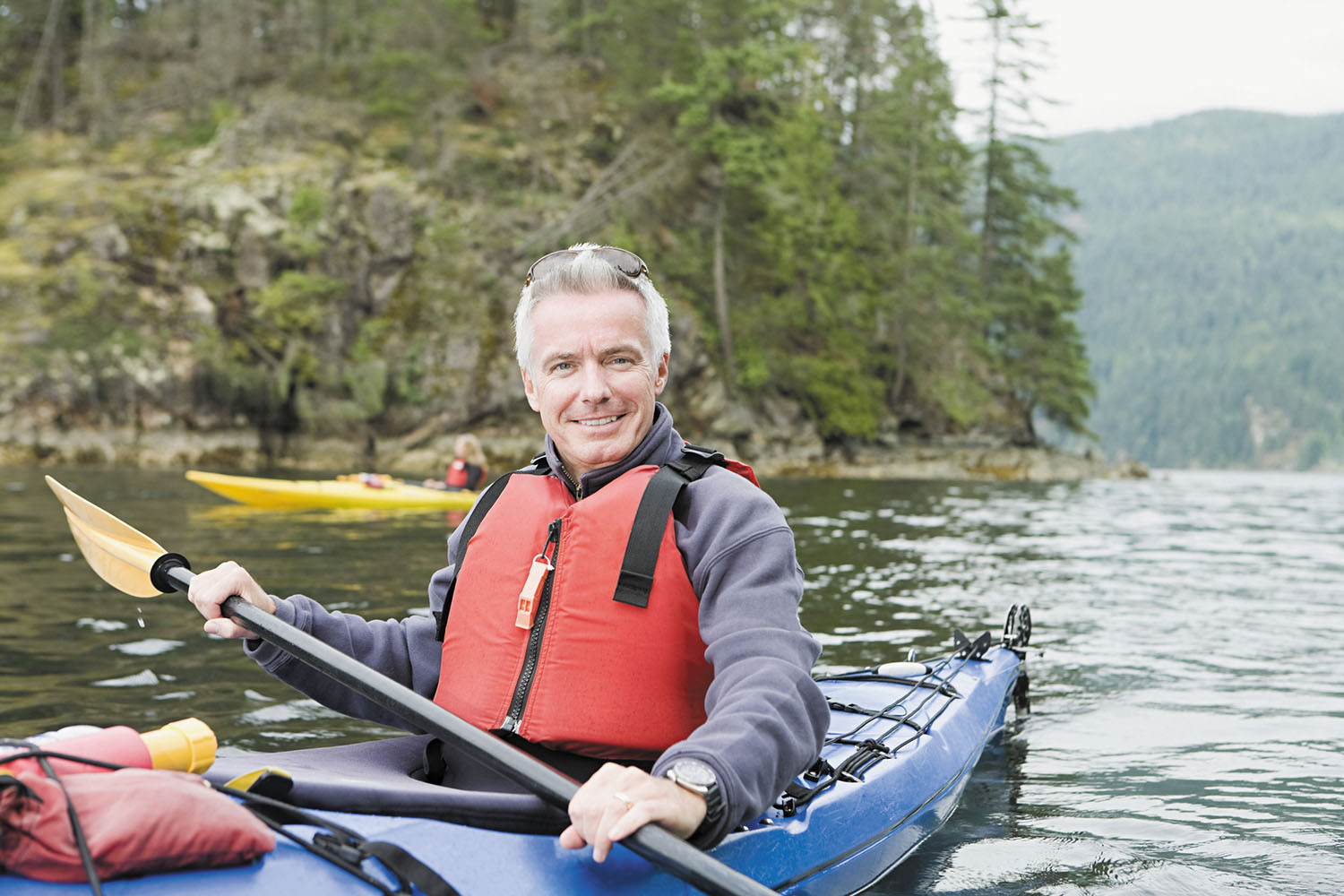Grab your paddle
Paddle sports like canoeing, kayaking, and paddleboarding are great exercise for both the body and soul.
- Reviewed by Howard E. LeWine, MD, Chief Medical Editor, Harvard Health Publishing; Editorial Advisory Board Member, Harvard Health Publishing

Summer is the ideal time for water activities. If you're looking for a new and exciting way to enjoy the water, take up a paddle sport like kayaking, canoeing, or paddleboarding.
"Paddling sports help tone muscles that make everyday movements easier with less chance of injury," says Kathleen Salas, a physical therapist with Spaulding Adaptive Sports Centers at Harvard-affiliated Spaulding Rehabilitation Network. "Plus, they get you outside with nature, which supports your mental and emotional health."
Whole-body effort
Paddle sports use different types of paddles. Single paddles (with a flat blade at one end) are used in canoeing and paddleboarding (standing or kneeling solo on a paddleboard, which resembles a wide surfboard).
Double paddles (with blades at both ends) are used in kayaking. There are two main categories of kayaks: flat water and whitewater. Flat water kayaks, which are designed for stable ponds, lakes, ocean inlets, harbors, and slow-moving rivers, are ideal for beginners.
While paddling can be a whole-body effort, the core, back, arms, and shoulders do the most work.
Core. The core comprises several muscles, but the ones used most in paddling are the rectus abdominis (the "abs" or "six-pack") at the front of the abdomen, and the obliques at the sides of your abdomen. The core acts as the epicenter around which every movement in paddling revolves — twisting to bending to stabilizing your trunk to generate power.
Back. Paddling engages most of the back muscles, but the latissimus dorsi muscles, also known as the "lats," and the erector spinae carry the greatest load. The lats, large V-shaped muscles that connect your arms to your vertebral column, protect and stabilize your spine and provide shoulder and back strength. The erector spinae, a group of muscles that run the length of the spine on each side, helps with rotation.
Arms and shoulders. Every paddle stroke engages your upper arm (biceps and triceps), as well as the top of your shoulder (deltoid).
Paddling also helps strengthen your muscles for everyday movements. For instance, during a stroke, the paddle's angle and depth are almost always different, so your muscles have to react to the changes in resistance.
"This variety is similar to the real world, where you and your muscles have to quickly respond to different movements and tension," says Salas.
Paddling also helps improve grip as you grab and hold the paddle's handle. What's more, studies have shown that being close to water can produce a calming effect along with lowering heart rate and blood pressure.
Dress for success and safetyMake sure you're prepared for time on the water. Use plenty of sunscreen, and wear a long-sleeved dry-fit sun shirt that blocks the sun's ultraviolet rays and quick-dry shorts. Wear a wide-brimmed hat to cover your face and neck and wraparound sunglasses that fully protect your eyes from reflected sunlight. Always wear a life jacket, too. And consider investing in water shoes. These are made from lightweight and breathable mesh material that allows water to drain and dries quickly. Choose ones with durable rubber soles for walking over rocky and slippery surfaces. |
Hit the water
Which type of paddle sport should you begin with? It depends on your fitness, personal interest, and comfort level.
For instance, kayaks are closer to water level than canoes. They require less leaning and twisting, which makes them a better option for people with low back issues. Paddleboarding is more challenging than kayaking or canoeing, as it requires balancing skills and ankle stability.
No matter which you select, Salas suggests signing up for individual or group paddling lessons where all equipment is provided.
"The experience teaches you the basics, like how to paddle and safely get in and out of the boat, and other rules and etiquette," she says. "Experts also can explain how to navigate appropriate water and wind conditions."
As with any new endeavor, go slow at first. "Keep your initial outings to an hour, and don't push yourself, since the movements are unfamiliar and you don't want to overdo it," says Salas. "You may feel strain and stiffness in many parts of your body as it adapts to the new demands and forces. But as you progress, you can extend your time and effort."
Image: © Image Source/Getty Images
About the Author

Matthew Solan, Executive Editor, Harvard Men's Health Watch
About the Reviewer

Howard E. LeWine, MD, Chief Medical Editor, Harvard Health Publishing; Editorial Advisory Board Member, Harvard Health Publishing
Disclaimer:
As a service to our readers, Harvard Health Publishing provides access to our library of archived content. Please note the date of last review or update on all articles.
No content on this site, regardless of date, should ever be used as a substitute for direct medical advice from your doctor or other qualified clinician.
















